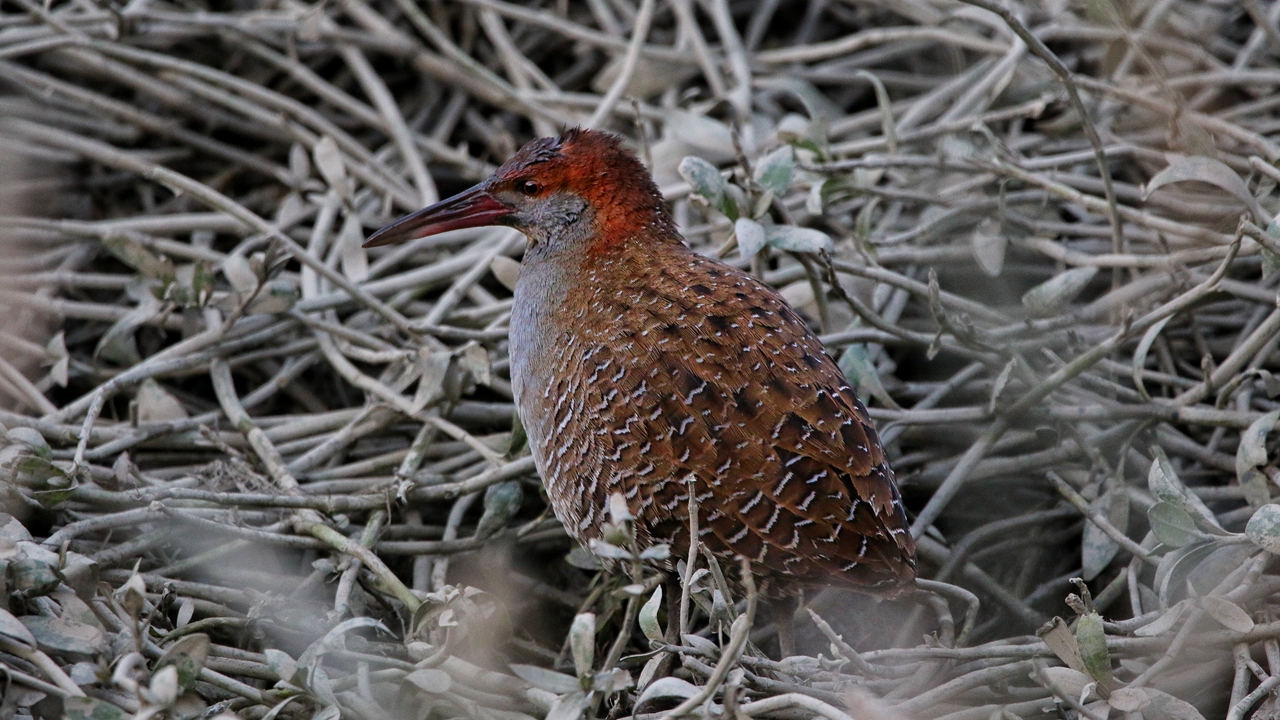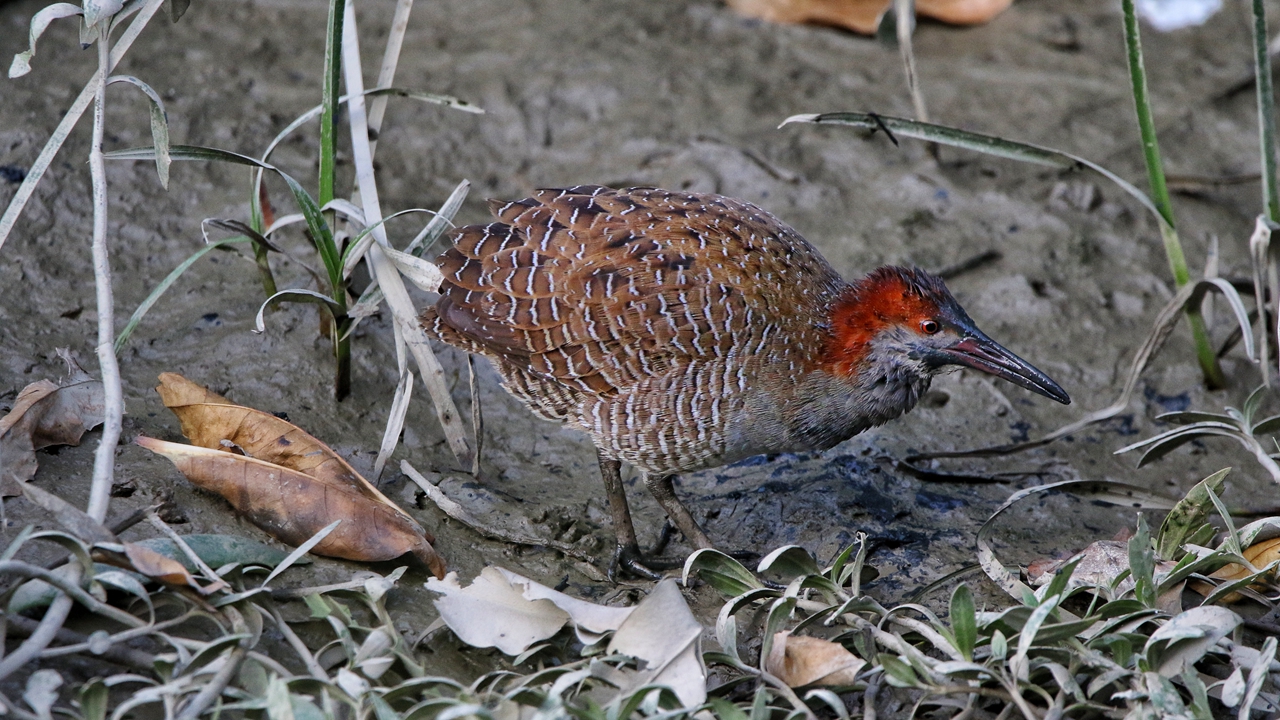The slaty-breasted rail
Writer: Isaac Cohen | Editor: Zhang Chanwen | From: Original

A slaty-breasted rail is seen in Futian Mangrove Park. Photos by Isaac Cohen
The slaty-breasted rail (Lewinia striata) is a medium-sized bird species found in Shenzhen’s wetlands. With a slaty-gray breast givingthe bird its name, it has a plump body covered in dark feathers, a red beak and a reddish patch over the head. Its long legs enable it to navigate through the dense vegetation of wetland habitats such as marshes, swamps, and mangroves.
蓝胸秧鸡是一种体型中等的湿地鸟类,胸部覆羽灰蓝色,身躯短圆,覆羽深棕色,喙红色,头部亦具栗红色块斑。跗跖及趾甚长,利于在植被茂密的沼泽及红树林湿地行动。
In Shenzhen, these birds can be spotted along the banks of rivers, ponds and lakes. They prefer areas with abundant cover and suitable nesting sites, making them difficult to spot.
在深圳可见于河流、池塘及湖泊附近,在植被茂密处营巢,巢甚隐蔽,难以察觉。
Slaty-breasted rails are omnivorous birds with a diverse diet. They feed on insects, small invertebrates, seeds and plant matter. They use their long beaks to probe the ground and vegetation, searching for prey. Their adaptable feeding habits contribute to their survival in different wetland ecosystems.
蓝胸秧鸡属杂食性鸟类,以昆虫等小型无脊椎动物和植物及其种子为食,常使用长长的喙在地面和植被中翻找猎物。多样化的食谱有助于它们适应不同的湿地生境。

A slaty-breasted rail is seen in Futian Mangrove Park.
These birds typically breed during the spring and summer months. They construct nests with plant materials, often hidden in the dense vegetation. The female lays a clutch of up to six eggs that both parents take turns incubating for approximately three weeks. The parents then care for the chicks, providing them with food and protection until they are ready to fledge and become independent.
蓝胸秧鸡通常在春季和夏季繁殖。巢由植物材料筑成,通常隐藏于茂密的植被中。雌鸟每窝产卵多达 6 枚,由亲鸟轮流孵化约三周后,雏鸟出生。在羽翼丰满,具备独立生活能力之前,亲鸟都会无微不至地照顾它们,提供食物和庇护。
The slaty-breasted rail helps to controlinsect populations, prevent potential pest outbreaks, and maintain the balance of local ecosystems. Additionally, their foraging activities stir up the soil and vegetation, facilitating nutrient cycling and promoting the growth of wetland plants.
蓝胸秧鸡能够通过捕食控制昆虫数量,防止潜在的虫灾爆发,有助于维护当地生态系统的平衡。此外,由于它们在觅食中会翻动土壤和植被,从而促进了养分循环及湿地植物的生长。
The wetland plants in turn provide habitats for various organisms, including fish, amphibians, and invertebrates. Their presenceindicates the ecosystems’ overall health and biodiversity.
反过来,湿地植物又为鱼类、两栖动物和无脊椎动物等提供了栖息地。此外,蓝胸秧鸡还是重要的生态指示物种,反映了生态系统的整体健康程度,丰富了物种多样性。